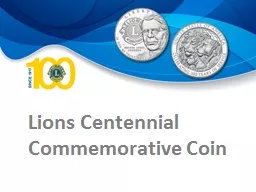PPT-Why Lions Leave and How We
Author : kittie-lecroy | Published Date : 2018-02-23
Can Retain Them Market Measurement Inc June 30 2017 1 Objective Translate an indepth understanding of attitudes behaviors and perceptions among dropped members into
Presentation Embed Code
Download Presentation
Download Presentation The PPT/PDF document "Why Lions Leave and How We" is the property of its rightful owner. Permission is granted to download and print the materials on this website for personal, non-commercial use only, and to display it on your personal computer provided you do not modify the materials and that you retain all copyright notices contained in the materials. By downloading content from our website, you accept the terms of this agreement.
Why Lions Leave and How We: Transcript
Download Rules Of Document
"Why Lions Leave and How We"The content belongs to its owner. You may download and print it for personal use, without modification, and keep all copyright notices. By downloading, you agree to these terms.
Related Documents














